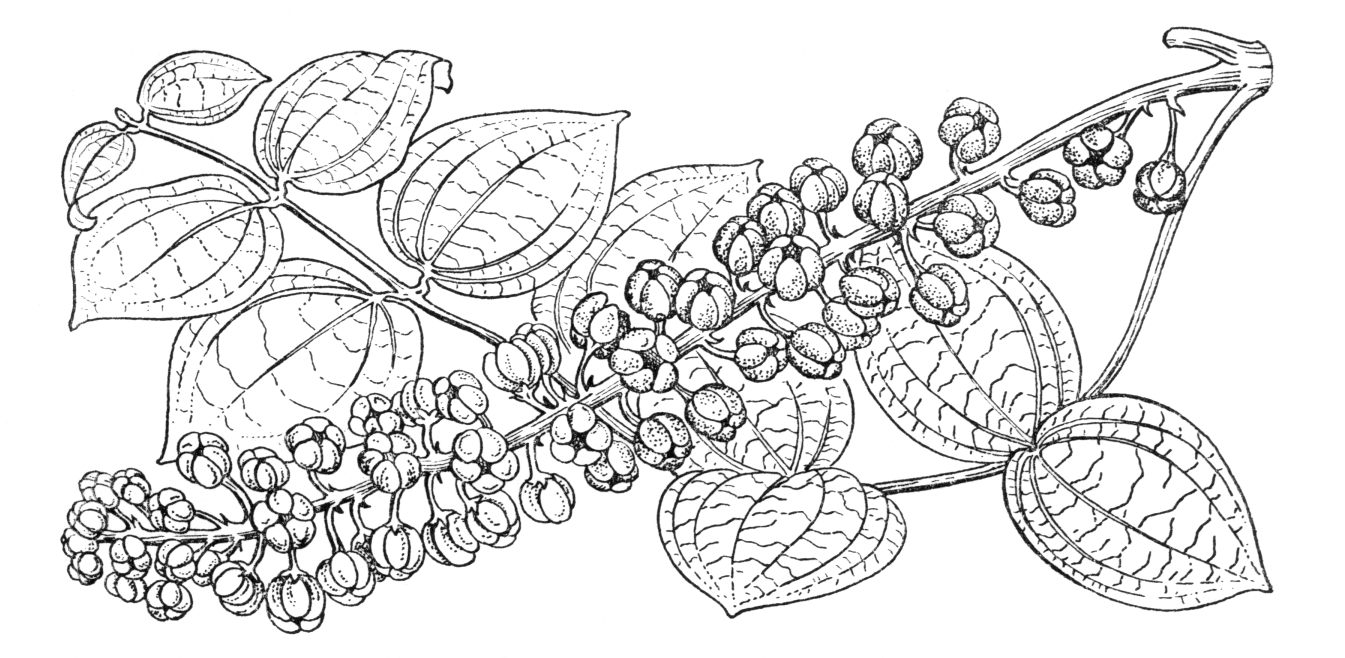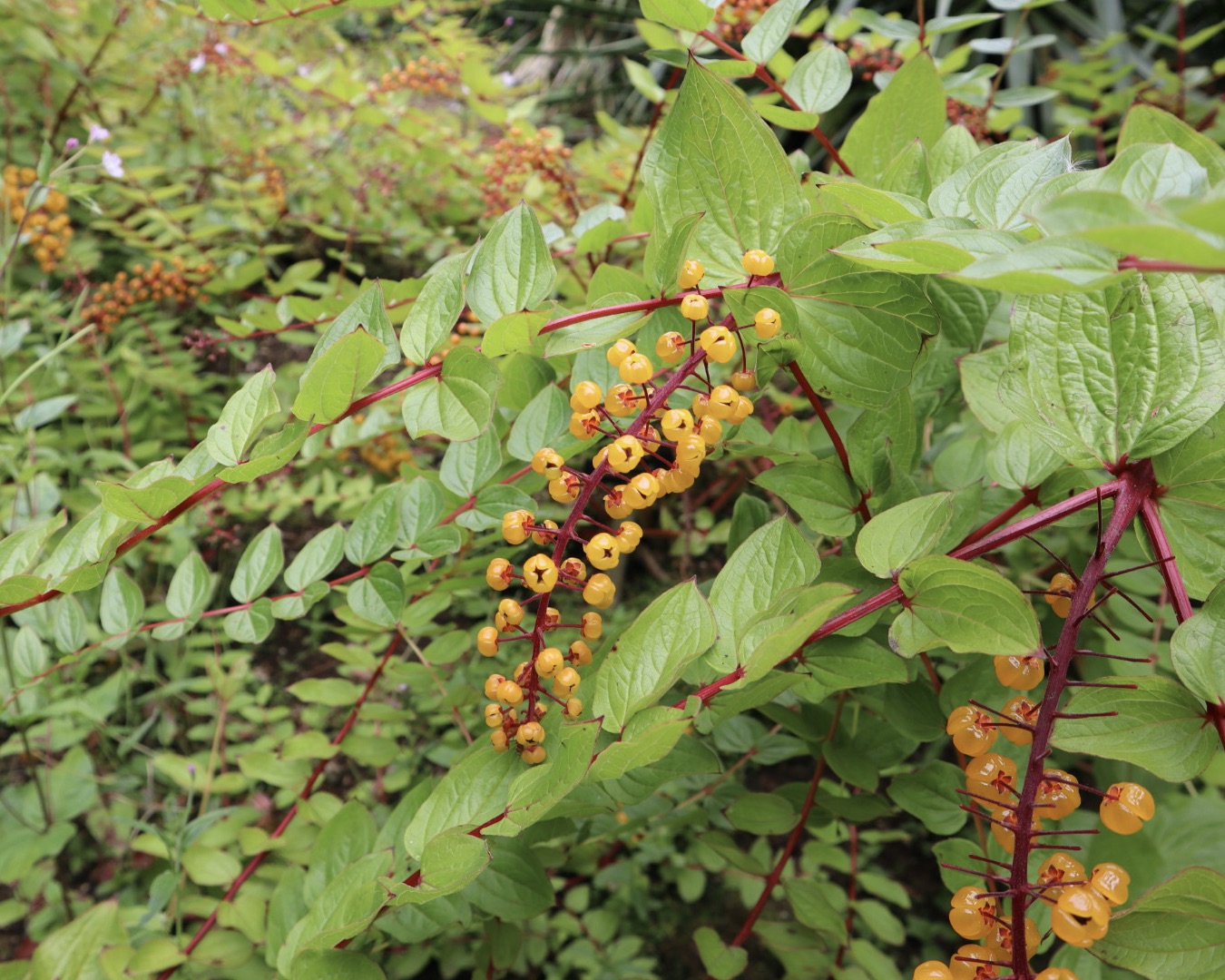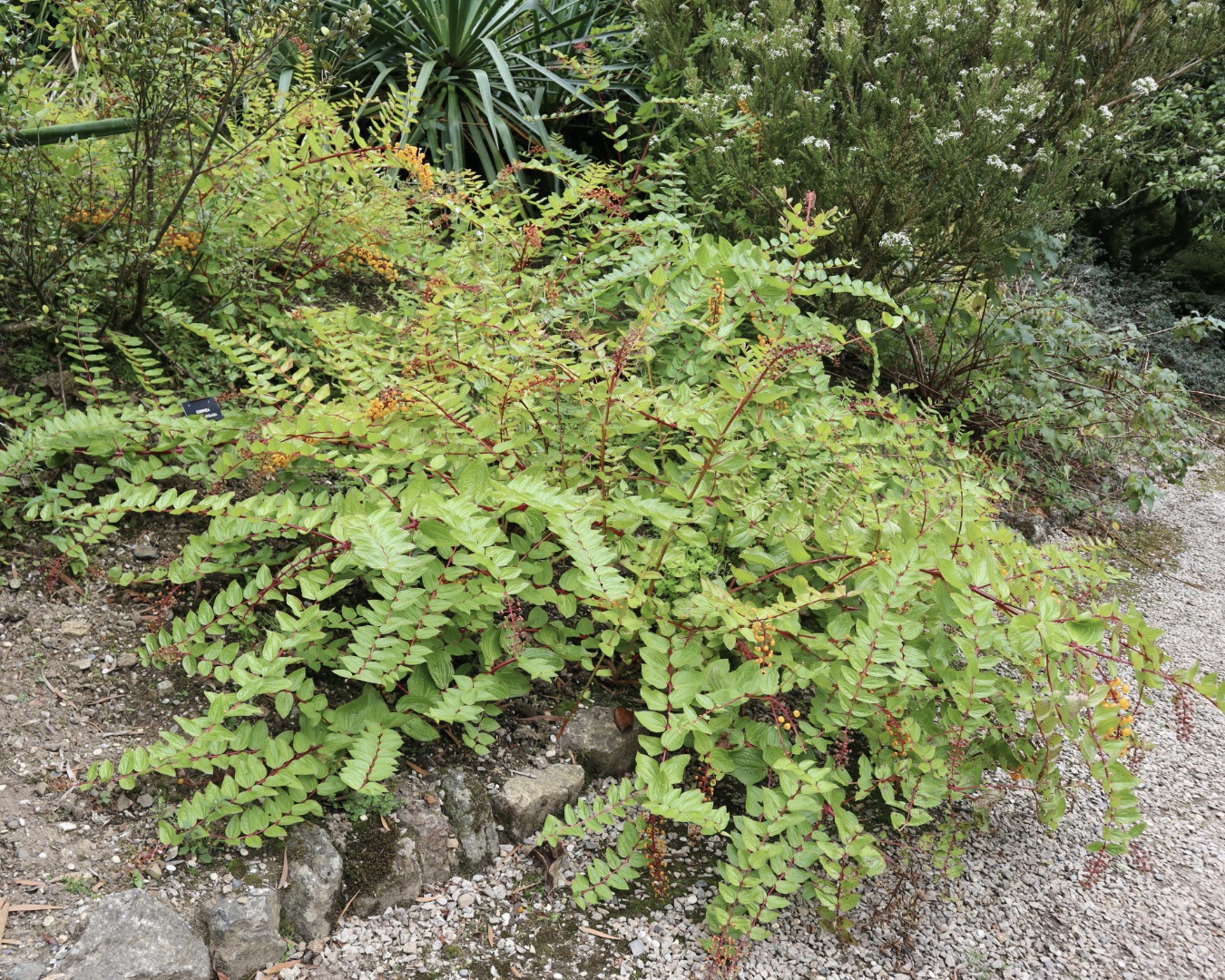Coriaria terminalis
Credits
Article from Bean's Trees and Shrubs Hardy in the British Isles
Recommended citation
'Coriaria terminalis' from the website Trees and Shrubs Online (treesandshrubsonline.
Genus
This species can scarcely be termed a shrub. It forms a woody root-stock which sends up annual branching stems 2 to 4 ft long, and spreads by underground rhizomes. Leaves ovate, 1 to 3 in. long, usually five- or seven-nerved, occasionally nine-nerved; much the larger, broader, and rounder on the main stems. Flowers, male and female ones of which are produced on terminal racemes 6 to 9 in. long, are greenish at first, the petals of the female flowers thickening and becoming fleshy in the fruiting stage, and being then black or in one form, of a beautiful translucent yellow. Each fruit with its enveloping petals is nearly 1⁄2 in. across. Bot. Mag., t. 8525.
Native of Sikkim, where it was collected by Sir Joseph Hooker, 1849–53; also of China and Tibet; introduced to England in 1897. This beautiful plant, which is distinct from the other cultivated coriarias in its invariably terminal inflorescence (borne on the shoots of the year) and more numerously veined leaves, is hardy at Kew, and fruits there annually. The yellow-fruited form is distinguished as var. xanthocarpa Rehd., and is found from Sikkim to Yunnan. Wilson introduced the form with black fruits from W. Szechwan in 1908.
Note: In 1926 I had an interesting letter from the late Sir Herbert Maxwell who, writing from Monreith, Wigtownshire, said: ‘You refer to the leaves and fruits of Coriaria as being “mostly poisonous” and we have scrupulously respected them as such; but a small grandson of mine, having with impunity devoured a branch of golden berries of C. terminalis, I would like to know whether anything definite is known about the properties of that species. I have tasted the fruit and found it agreeably sweet and juicy: if it were proved to be innocuous to human beings it would soon become popular as a beautiful dessert dish.’
I have not been able to find any definite pronouncement on the edibility or otherwise of the fruits of Coriaria terminalis, but from Sir Herbert’s experience it would seem that they are harmless, at least in small quantities. The late W. Hancock, writing in 1896, says the fruits of C. sinica have almost exactly the same pleasant flavour as bilberries, and Forrest in a field note on the same species says ‘fruit black, edible’.
In regard to the Indian species, C. napalensis, Sir George Watt writes, ‘leaves said to act as a powerful poison when given in large doses; seeds stated sometimes to produce symptoms like tetanus’, but goes on to say that he has seen horses eat the leaves without any injurious after-effects, and that the natives regularly eat the fruits, maintaining only that the seeds should be ejected.
There is no doubt at all about the deadly poisonous properties of C. myrtifolia. Much also has been written of the poisonous nature of C. sarmentosa, the ‘toot-poison’ of New Zealand (so-called from the Maori name for the plant – ‘tutu’ – which is pronounced ‘toot’). Cheeseman says that most parts of the plant are poisonous, especially the young shoots and seeds, but that the juice expressed from the fruits is innocuous.
It seems that, on the whole, the coriarias should be treated cautiously as food.



